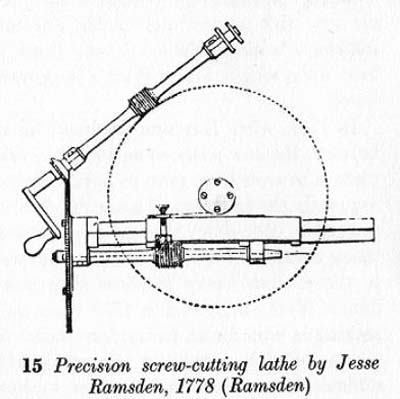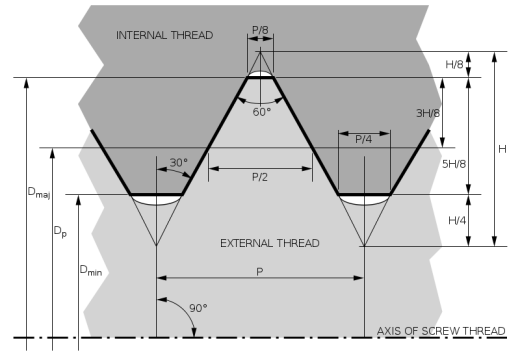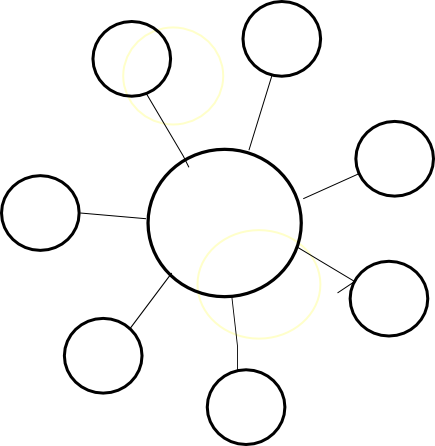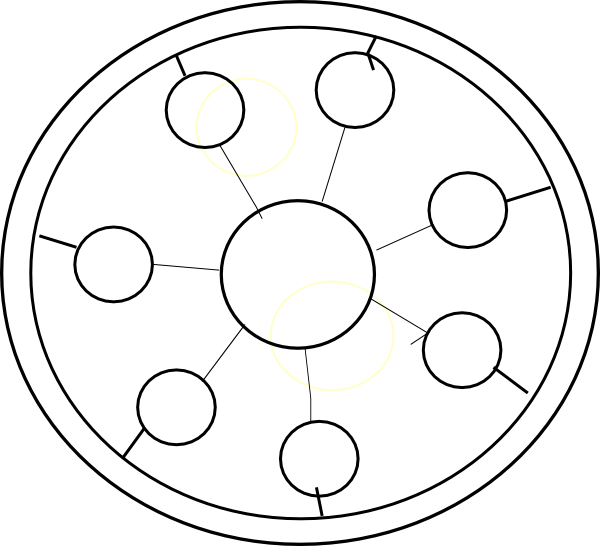
To collaborate and to compete, standards are needed. Support for "industry standards" has helped open new markets for Free and Open Source Software for Geographic Information (FOSS4G). For government work, spatial data is often essential; and "open standards" are increasingly mandated.
Bureaucrats love standards; they provide something to measure. But the pressure to "be standard" in order to get public work leads to immature specifications becoming mandated in law before they are ready for use. The business of selling standards to government is big business.

Screw-cutting lathe, Jesse Ramsden. 1770. A lathe is a self-replicating machine.
Screws
Jesse Ramsden built one of the first screw-cutting lathes in 1770. He used the first screw-cutting lathe he produced to build other, more precise screw-cutting lathes. When screw-cutting lathes were first industrialised, manufacturing was transformed bythe ability to reproduce very many common screws. It became feasible to cheaply mass-produce wood-based things as well as more complex machines. Look around you right now and there are probably a few dozen screws in the room.The early standards for screw thread and density were designed for large-scale government contracts (such as railway construction) and were in turn spread by them[f]. Engineers from different companies gathered into committees and published details of agreements. Everyone in a given industry would become compelled to participate, in order both to lower costs, and to be able to take over one another's projects. These groups became standards bodies working at a national level, intended to agree on common electrical and engineering components.

ISO 68
ISO was founded in 1947, rebuilt from a federation of national standards bodies that had been around in some for since 1926.One of the first standards created by ISO was an agreement on screw threads, ISO 68, which would supersede local standards all over the world. Portability of the components of industry means benefits from globalisation, as parts of some work can be sourced and assembled anywhere in the world.

ISO is a meta-standards body made up of national standards bodies and liaisons with industry standards organisations. Member states join committees that stage a vote on specifications under proposal.
This system is highly vulnerable to the effects of globalisation. Through local partnerships, multinational companies such as IBM and Microsoft can have a biasing effect in many national standards bodies. The decision-making groups will be weighted with their employees acting through more "community"-like business associations. The globalising actions of corporate entities are given a great business benefit by the propagation of their work through ISO.

Where in the past an industry would have one body making agreements over its rules, the IT industry is host to many standards consortia, with varying amounts of public process and barrier to entry. Several cover essentially the same ground; so global companies can join them all and contribute work to whoever may treat it most favourably.[f]
In the 1980's, dissatisfaction with the slow pace of ISO and the inappropriateness of its heavy processes for fast-moving technology projects, there was a move into private consortia to produce IT standards.[f] To sell to government, however, it helps a lot to have an ISO standard, so there has been a rapprochment, with industrial standards groups entitled to "fast-track" work that is proven and popular.
Government provisioning of software systems increasingly demands the use of "open standards". Large companies - IBM, and Sun - sell open-source-based platforms on the basis that they are open standards compliant. Thus the push to get ODF, the Open Document Format, through the ISO as a word processing output standard - and the pushback against Microsoft's attempt to do the same with its own more verbose effort, OOXML.
A consortium must run itself (organising, schmoozing, fundraising) and needs paid staff to do that. Thus they must seek sponsorship from interested companies. A sufficiently large contribution will buy one's organisation and friends a certain vote in some number of committees, even a seat on the main Architecture Board. The companies will come to standards efforts with an agenda - to be adopting early what later becomes recommended or mandated, and to include their client requirements in agreements. Participation takes up a lot of time; the core members are effectively funded to be involved by their organisations. They are in the business of selling standards.
A consortium may have a kind of "certification license" - essentially subscribers are paying to be able to make certain claims about compliance on the basis of responses having been evaluated by some competent third party, in this case the consortium.
Standards are critical to government procurement which is a very large and relatively stable market; also to infrastructural industries like banking which need to avoid dependency on any one vendor's parts.
Managers of government projects perceive a need for "standards". This has crystallised from when really common components were necessary. Corporations compete to create "standards" to sell to this market; perhaps working with several consortia and many national bodies, racing for accreditation at the highest level.
Pressure to certify de facto standards - whether they have arisen from a near-monopoly supplier, a consortium aimed at displacing a monopoly from the market, or a cooperative arrangement - becomes higher the more money is being invested.

Standards tend to exist. They really come to exist without formal adoption.
In a set of consortia, each company "works against, as well as for", "the higher organization of industry". Standards begin to serve the needs of the standards industry, not of the underlying industry itself. The more actively the companies are also involved in government consultancy, the more their ability to dictate how the standards requirements are expressed.

INSPIRE
INSPIRE is supposed to be a European Commission Directive "establishing an Infrastructure for Spatial Information in the European Community. It requires that information data holdings by all public authorities must be published and the sources must be available online (be it openly or behind a "toll").
The process emphasises compliance as a benchmark for whether a member state and its public authorities are meeting the needs of the Directive. In order to achieve compliance, a set of binding rules are needed. The Implementing Rules provide a text for the agreement. They focus on the use of "open standards" and in some cases mandate the use of a standard where it is already common.[f] Prescribed data models are finely detailed, and some standards are still basically experimental.[f]
Bruce Schneier thinks that government should "Legislate results and not methodologies". The standardisation of the screw follows this advice: the standard is the screw (its diameter, head shape, thread angle and frequency). The legislation is for the results, the screw - not for the methodology, the screw-cutting lathe.
The question now becomes not "does the software meet the needs" but "does the software meet the standards". The process reflects an institutional assumption that a bad law may be better than no law. "Standards" come to exist because of a need to codify them in law.
"Rough consensus and running code" produced a generation of successful internet standards. FOSS projects preserve this ethos. The Open Source Geospatial Foundation (OSGeo) has sheltered several informal efforts at standardisation across projects. The standards industry might as well be happening on a different planet.
How can we break the chain that binds public work to special interest consortia? What are the models for a public administration's support of free software and open data - without confronting industry? In an effort to "legislate results", how can FOSS projects help to minimise the burden of measurement? Can FOSS save us from standards?
home